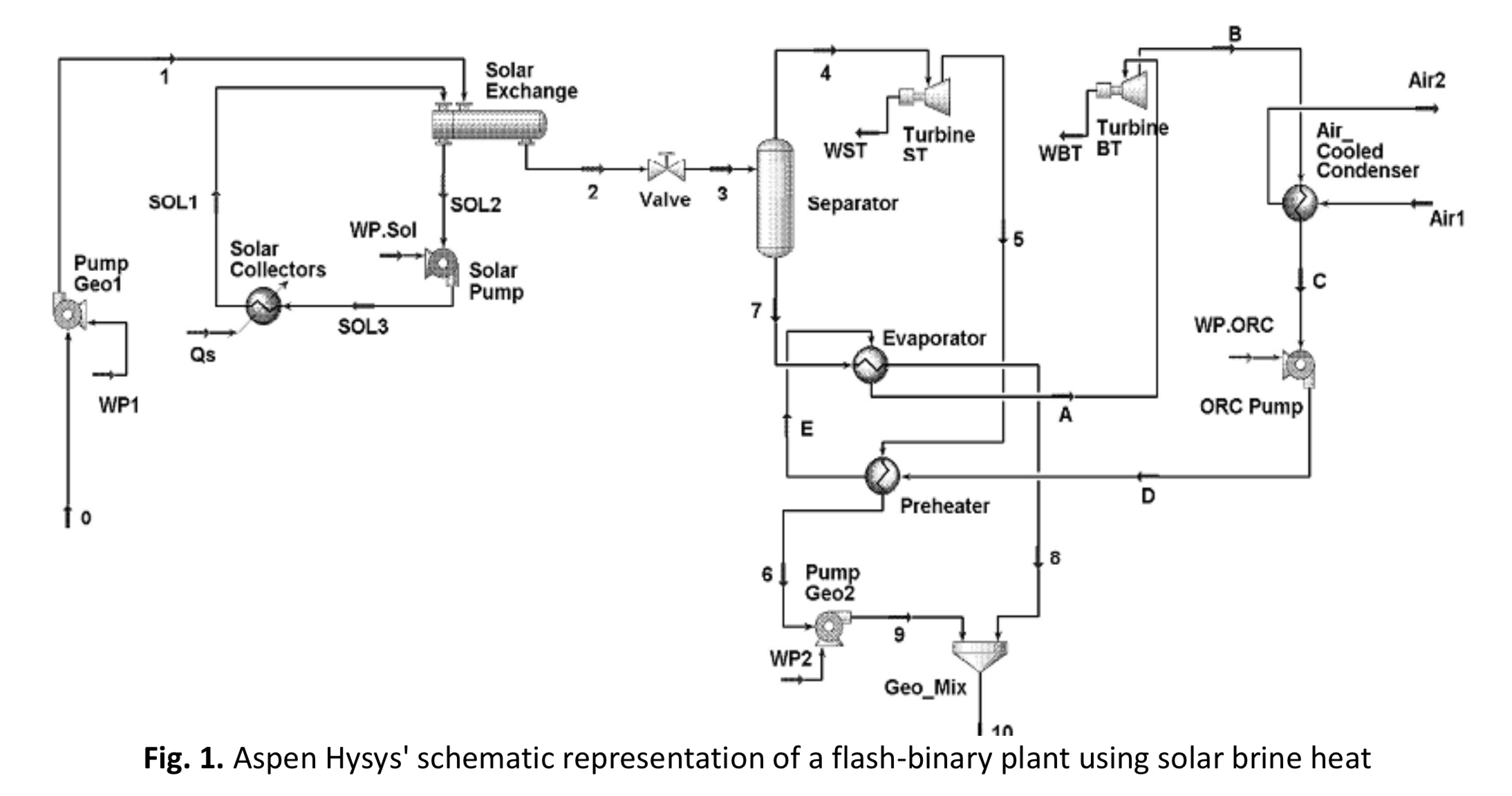Simulations and Optimizations for a Low-Temperature Hybrid Geothermal-Solar Power Plant
DOI:
https://doi.org/10.37934/arfmts.90.2.109123Keywords:
Solar geothermal system, solar energy, hybrid power plant, optimization, simulationAbstract
The possibility of producing electrical power in Algeria from low geothermal and solar heat resources is addressed using a hybrid power generation hypothetical system based on a combined flash-binary cycle with equal contributions from solar and geothermal energy. To improve their efficiency, energy integration techniques were used to recover waste heat from the steam turbine by preheating the working fluid R134a in the bottoming binary, which represents 30% of the energy acquired from the ORC cycle. The Aspen HYSYS application was used for power cycle simulation and modeling. A contact between the wane pressure and the pressure at the ORC binary cycle turbine's intake must be made to obtain the greatest power out of the hybrid power plant. According to the findings, the perfect flashing pressure of the flash cycle and the optimal intake pressure of the working fluid to the binary cycle's turbine are 450 kPa and 3340 kPa, respectively. The overall power generation and thermal efficiency of the hybrid plant were calculated to be 3823 kW and 16.1 %, respectively, at these pressures, demonstrating a significant thermodynamic advantage over each of the component systems.
Downloads

































